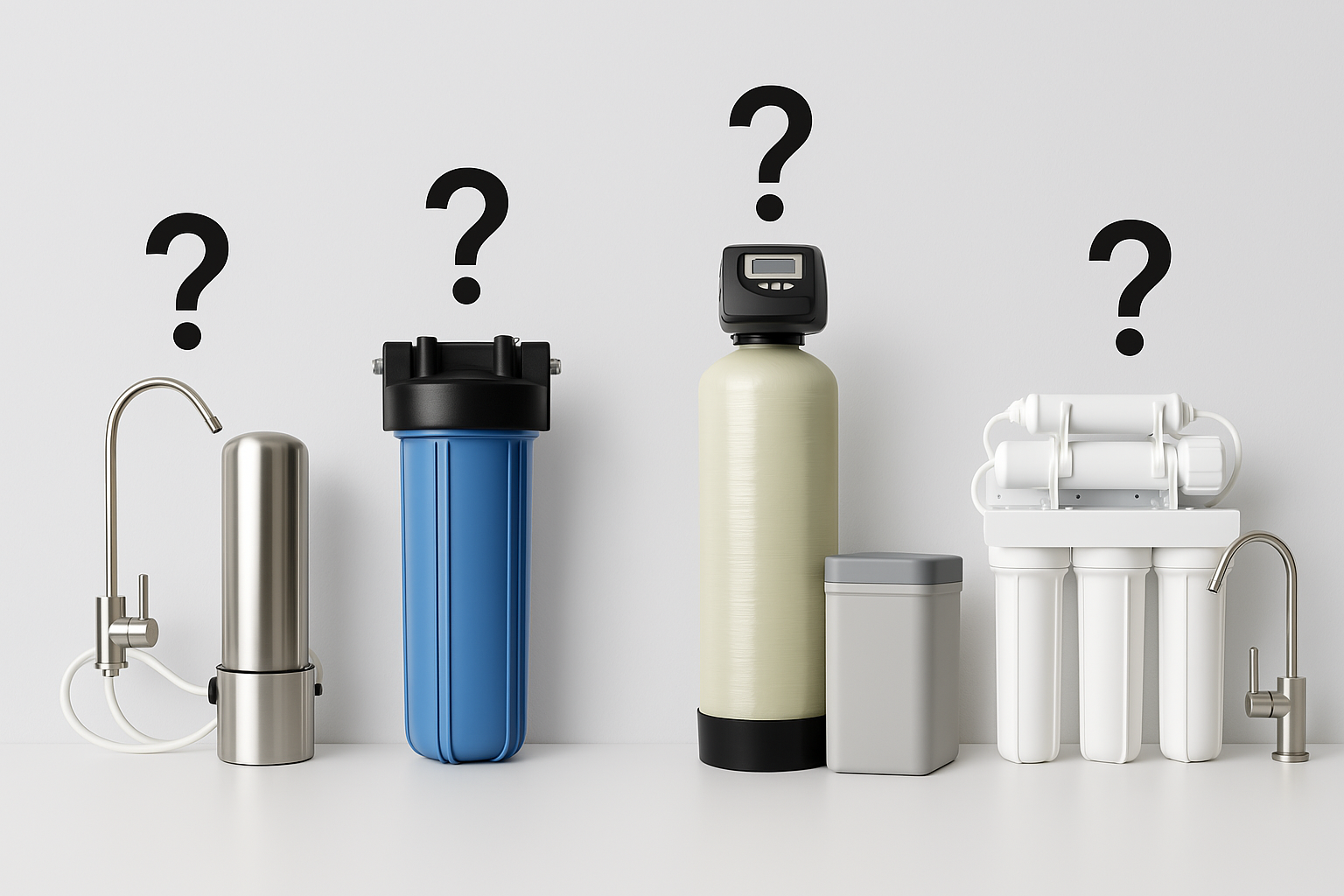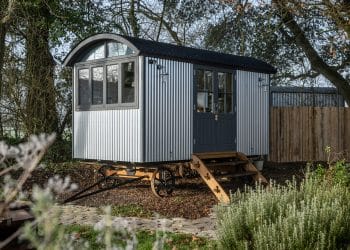Table of Contents

If you ask a plumber how to choose a water filter, they’ll likely say, “It depends on what you’re trying to fix.” That’s because the right filter for your home depends on your water quality, your goals, and how your household uses water. Are you worried about chlorine taste, scale buildup on your fixtures, or possible contaminants like lead or PFAS? Each of these requires a different type of solution. But once you identify your specific concern, the process of choosing the right water filter becomes surprisingly simple—and we’re here to walk you through it.
This guide is structured to match the way people think when they shop for a water filter. Instead of overwhelming you with brands and filter types upfront, we’re starting with your situation. That way, by the time you finish reading, you’ll know exactly what kind of system will solve your problem—whether it’s a basic under-sink filter, a whole-house system, or a combination. And if you’ve recently dealt with water heater repair or appliance issues, there’s a good chance a proper filtration setup could prevent those problems from happening again.
You have bad-tasting or smelly water at the tap
If your water smells like chlorine, tastes metallic, or just seems off, chances are you’re dealing with municipal water that’s been heavily disinfected—or pipes that are contributing to the flavor. This is one of the most common reasons homeowners start looking into water filtration. In this case, the best solution is an under-sink carbon filter or, for more advanced protection, a reverse osmosis (RO) system. Carbon filters are highly effective at removing chlorine and improving taste and odor. Reverse osmosis systems go even further, eliminating up to 99% of dissolved solids, including lead, fluoride, and some pesticides. These systems are typically installed under your kitchen sink and deliver clean, refreshing water straight from a dedicated tap.
You have hard water that’s damaging appliances and leaving spots
If you’ve noticed crusty white residue on faucets, spots on your dishes, or had repeated service calls on your water heater or dishwasher, hard water is likely to blame. It’s full of calcium and magnesium that accumulate over time and reduce the efficiency and lifespan of your appliances. The fix here isn’t a traditional filter, but a water softener. Softeners remove those minerals using an ion exchange process, protecting your plumbing and making cleaning easier. Many people pair a softener with a whole-house filter to get both mineral reduction and improved taste and smell.
You have visible sediment, rust, or cloudy water.
If your water looks murky, has floating particles, or you’ve seen orange stains in your tub or toilet bowl, you might have sediment or rust in your supply, especially if you use well water or live in an older home. In this case, a whole-house sediment filter is a must. These filters are installed at the point where water enters your home, capturing dirt, sand, and rust particles before they reach your faucets or appliances. It’s one of the most effective ways to protect both your plumbing system and your health from particles you don’t want to be drinking or bathing in.
You have concerns about serious contaminants like lead, arsenic, or PFAS
If you’ve seen reports about dangerous contaminants in your city’s water, or just want peace of mind, you’ll need a system that does more than improve taste. A reverse osmosis system is one of the most reliable options for removing lead, arsenic, nitrates, and PFAS (so-called “forever chemicals”). Installed under your kitchen sink, it uses a semi-permeable membrane and multiple filters to remove nearly all contaminants. For broader protection, you can install a whole-house system with multi-stage filtration, though these tend to be more expensive and require more space and maintenance.
You have dry skin, dull hair, or irritation after showers
If your showers leave your skin feeling itchy or your hair brittle, the problem might be the water itself, specifically chlorine or hard water minerals. A quick, affordable solution is a showerhead filter that reduces chlorine and softens the water just enough to feel a difference. If this issue affects the whole family or multiple bathrooms, upgrading to a whole-house filtration system that targets chlorine may be a better long-term fix. Not only will it improve the feel of your water, but it may also help preserve your towels, clothing, and even plumbing fixtures.
You have appliances you want to protect and make last longer
If you’ve invested in a new dishwasher, washing machine, or hot water heater, protecting them from scale, sediment, and chemical buildup should be a top priority. Over time, unfiltered water can clog lines, corrode components, and reduce performance, leading to expensive repairs. In this case, a whole-house filter is the way to go. It treats all the water entering your home, not just what comes out of your kitchen faucet. For even more protection in areas with hard water, pair the filter with a water softener. This combo can drastically reduce wear and tear on all your appliances.
You have well water instead of city water
If your water comes from a private well, you face a unique set of challenges—bacteria, sediment, iron, and even pesticides. A basic under-sink filter won’t be enough here. What you’ll need is a whole-house system that includes a sediment pre-filter, a carbon filter, and often a UV purifier to kill bacteria and viruses. If your well water is hard, you’ll also need a softener. Because well water quality can vary seasonally, it’s smart to get your water tested at least once a year and adjust your filtration setup if needed.
You just want better water at the kitchen sink
If all you’re after is great-tasting water for drinking and cooking, and your home’s overall water quality isn’t bad, you don’t need a whole-house system. A simple under-sink carbon filter is more than enough to improve flavor and remove basic contaminants. If you’re looking for extra peace of mind, a reverse osmosis system adds additional filtration layers and removes a broader range of impurities. Both options are easy to install and maintain and can dramatically improve your everyday water experience without a major investment.
You hate remembering to change filters
If maintenance is a concern and you know you’ll forget to swap filters on time, look for systems with long-lasting filters—some last up to a year—or automated subscription services that ship replacements to your door. Some newer systems even include sensors or apps that alert you when it’s time to replace a cartridge. Whether it’s an under-sink filter or a whole-house system, having a low-maintenance setup will ensure it keeps working the way it should.
Final Thoughts:
No one water filter is right for every home, and that’s actually a good thing—because it means you can tailor your system to your specific needs. Once you understand what’s in your water and what you want to change, the decision becomes simple. Whether you need to improve the taste of your drinking water, protect your appliances from hard water damage, or filter out serious contaminants, there’s a system out there that does exactly that. And if you’re still unsure, don’t hesitate to ask a plumber for a quick water test or product recommendation—it’s a small step that can make a big difference in your home’s comfort and health.







